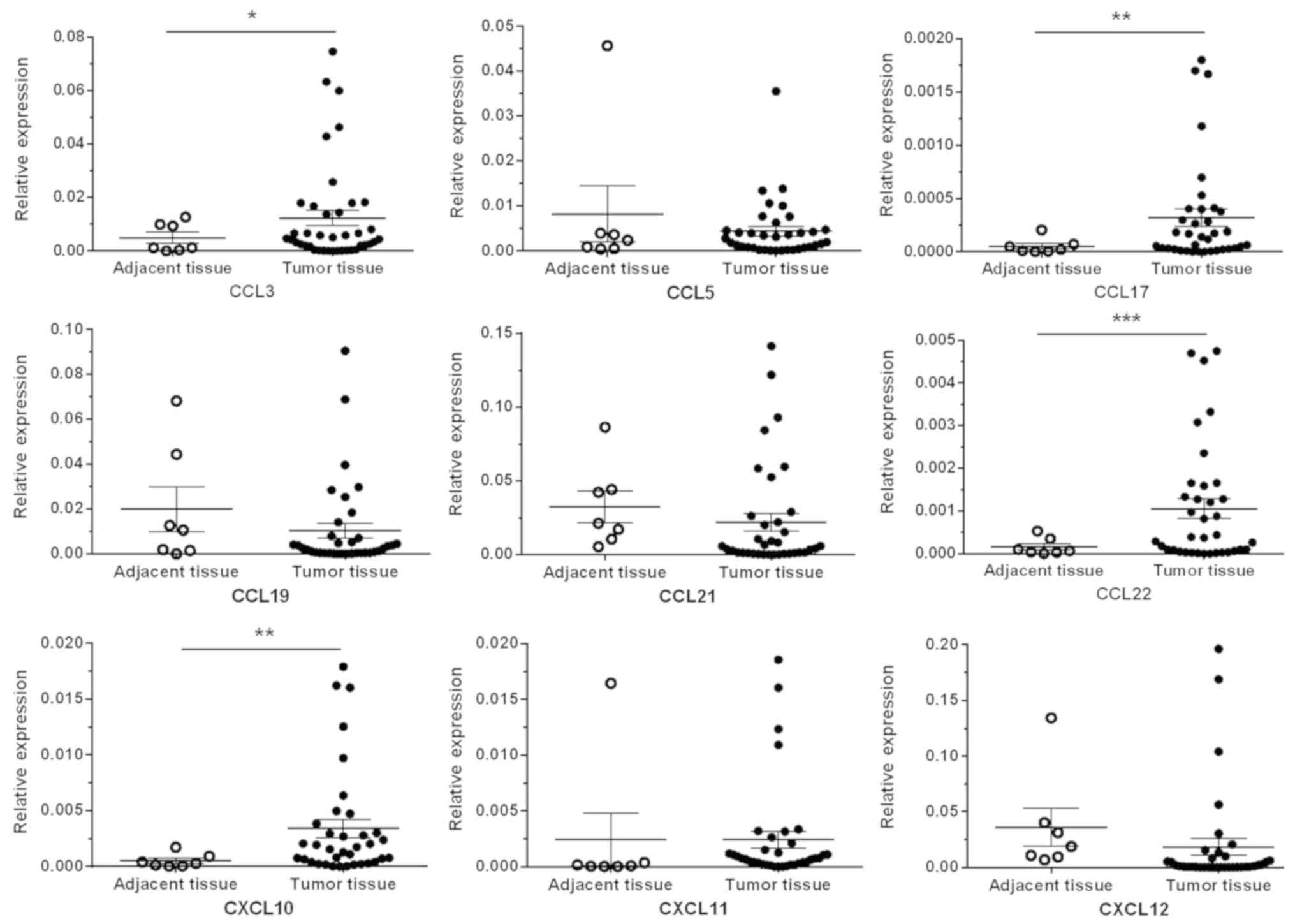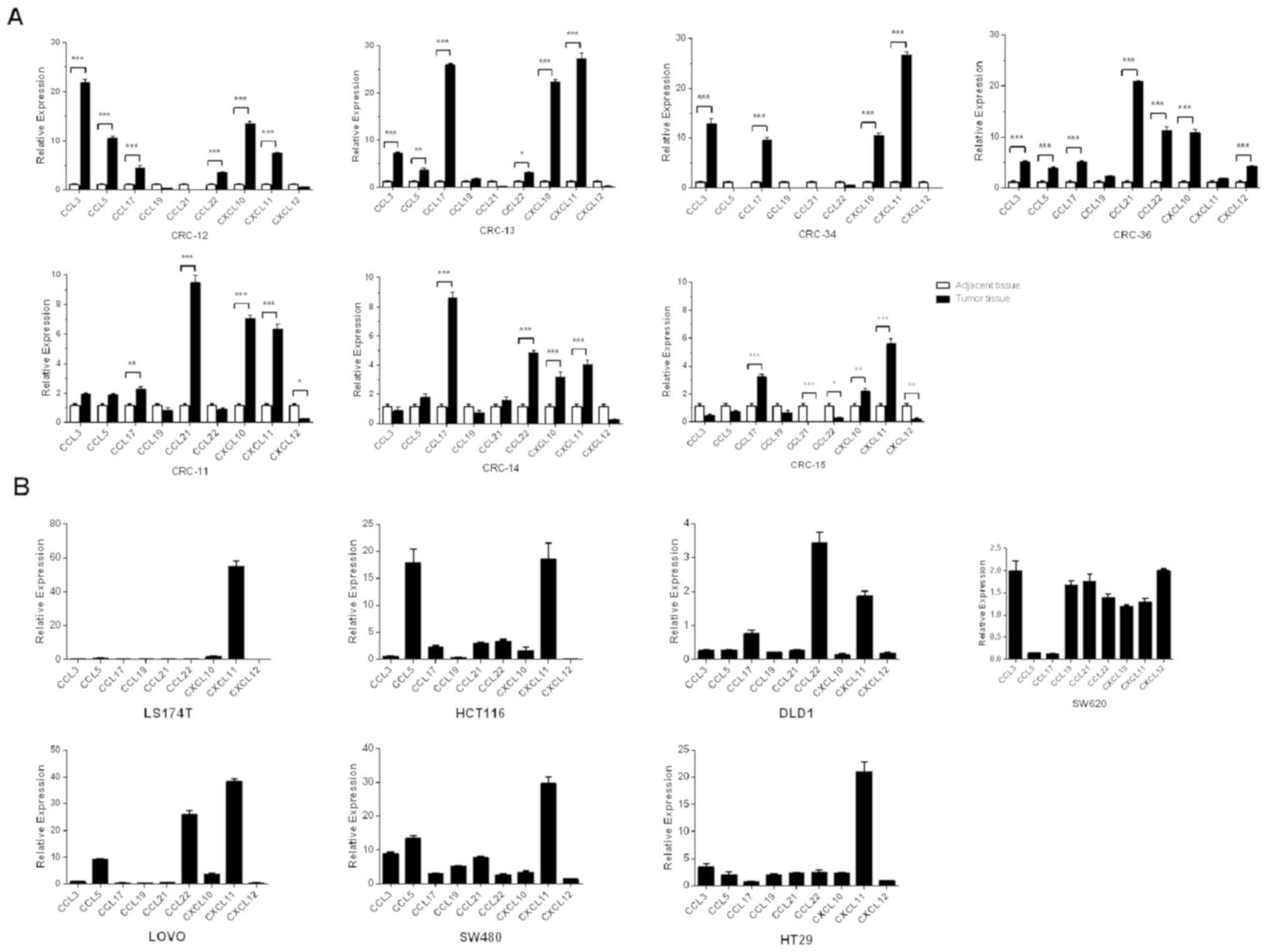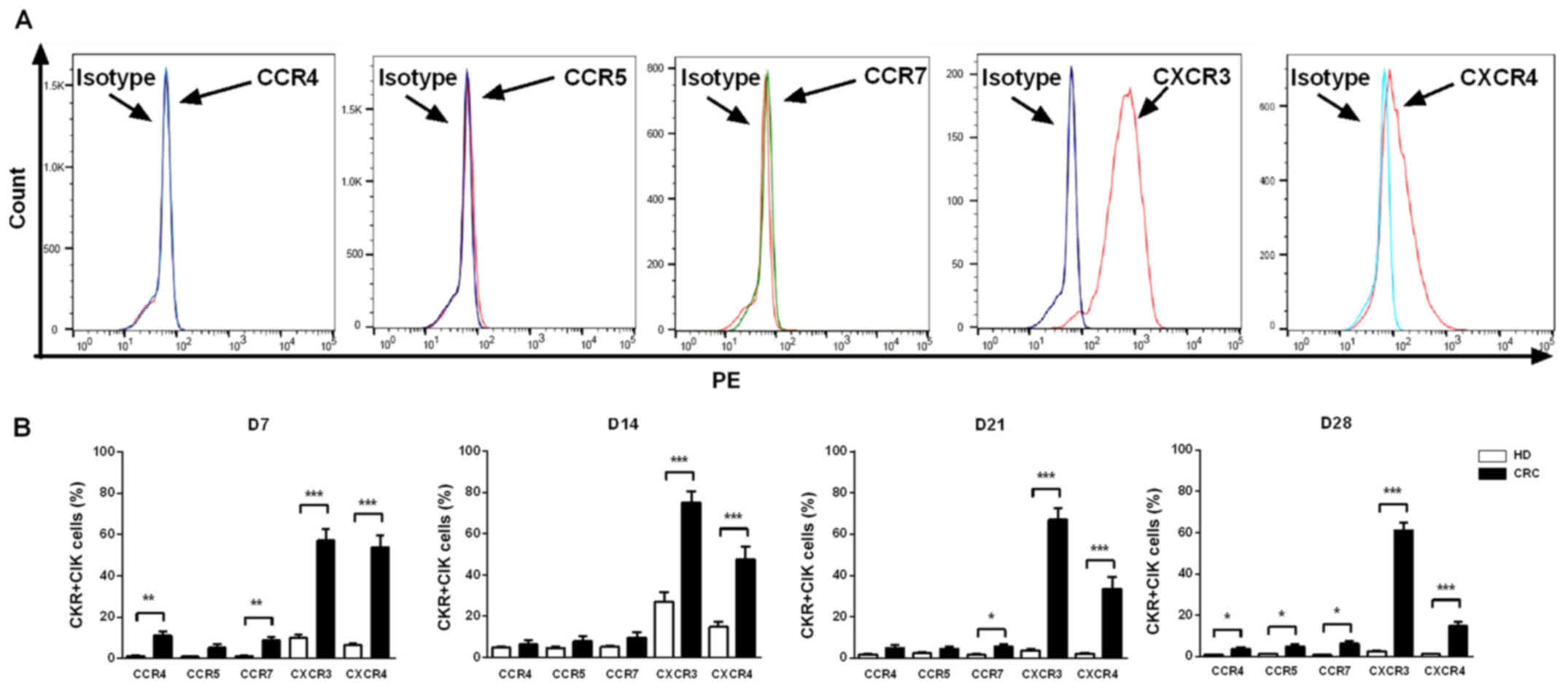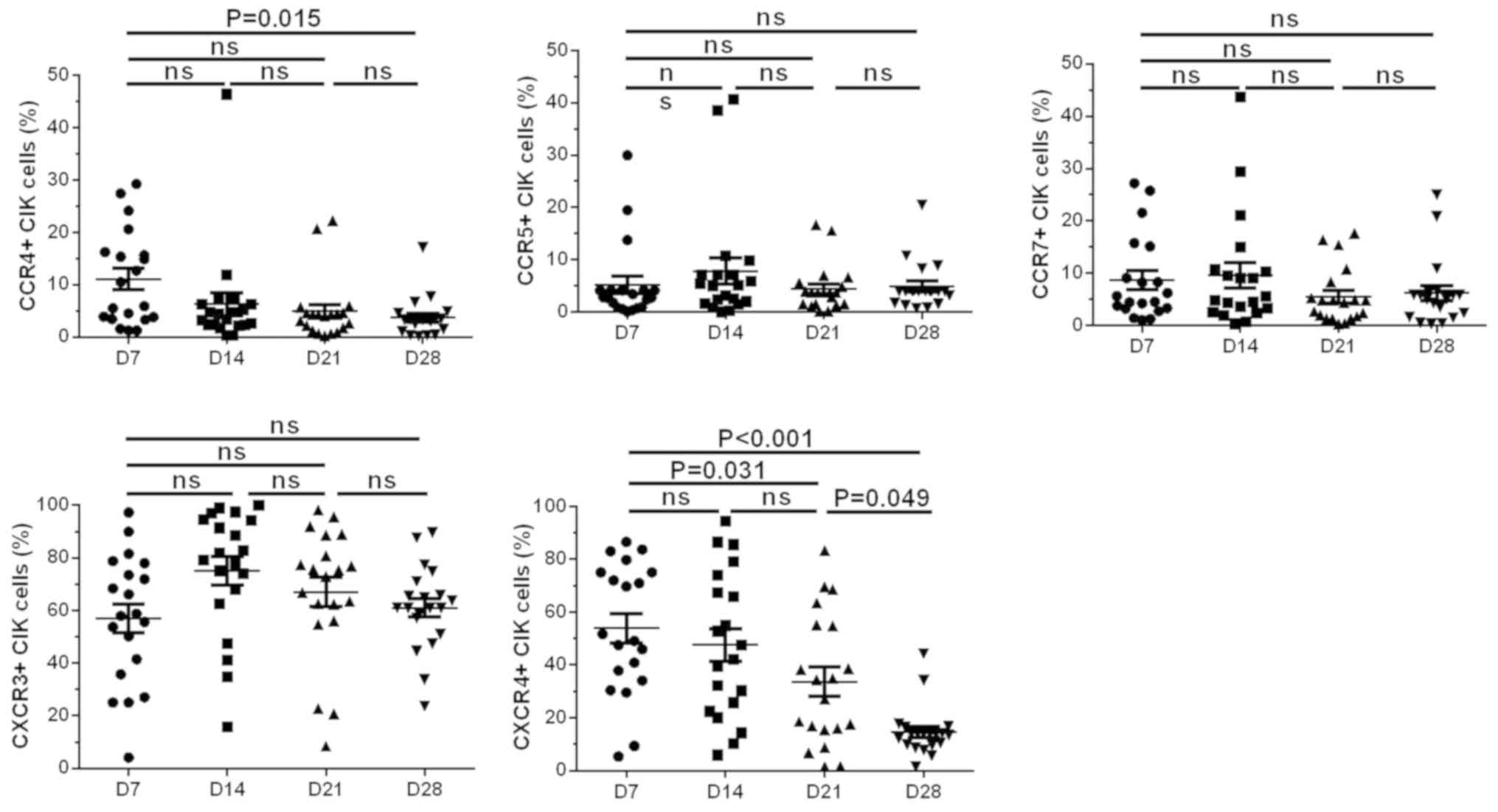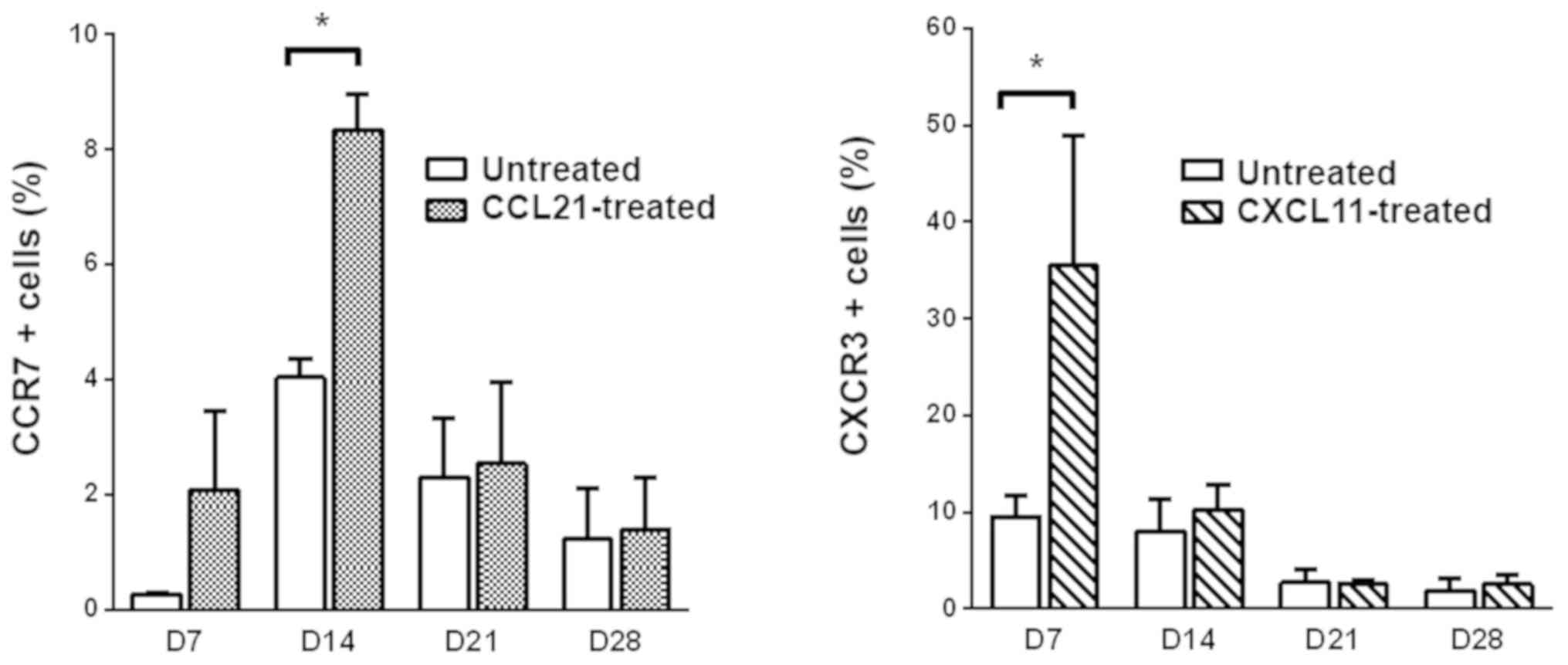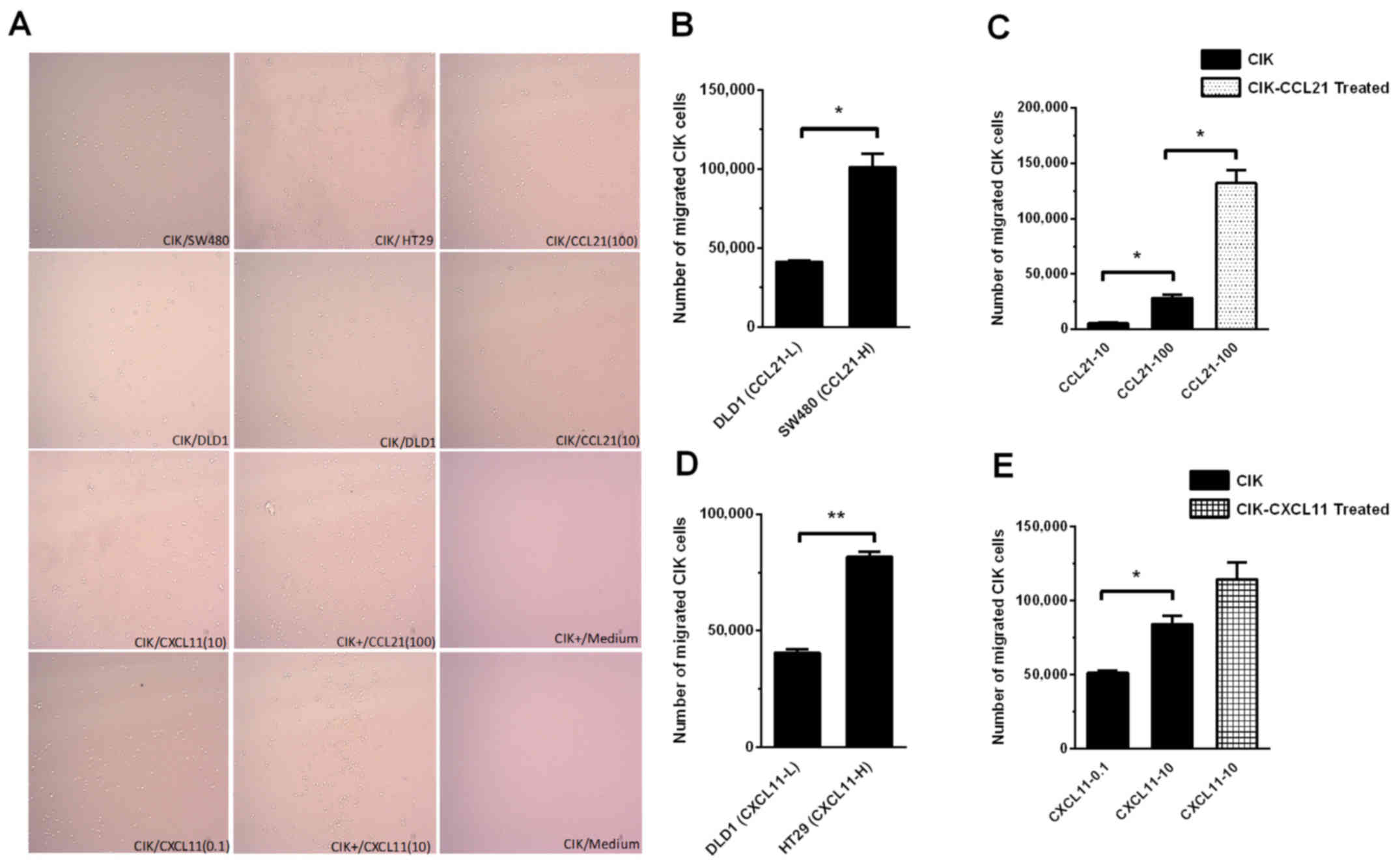|
1
|
Bray F, Ferlay J, Soerjomataram I, Siegel
RL, Torre LA and Jemal A: Global cancer statistics 2018: GLOBOCAN
estimates of incidence and mortality worldwide for 36 cancers in
185 countries. CA Cancer J Clin. 68:394–424. 2018. View Article : Google Scholar : PubMed/NCBI
|
|
2
|
Dekker E, Tanis PJ, Vleugels JLA, Kasi PM
and Wallace MB: Colorectal Cancer. Lancet. 394:1467–1480. 2019.
View Article : Google Scholar : PubMed/NCBI
|
|
3
|
Hontscha C, Borck Y, Zhou H, Messmer D and
Schmidt-Wolf IG: Clinical trials on CIK cells: First report of the
international registry on CIK cells (IRCC). J Cancer Res Clin
Oncol. 137:305–310. 2011. View Article : Google Scholar : PubMed/NCBI
|
|
4
|
Giancola R, Olioso P, Di Riti M, Capone A,
Contento A, Pompetti F and Iacone A: Evaluation of an automated
closed fluid management device for processing expanded
cytokine-induced killer cells to use in immunotherapy programs for
cancer. Transfusion. 4:629–639. 2008. View Article : Google Scholar
|
|
5
|
Baker J, Verneris MR, Ito M, Shizuru JA
and Negrin RS: Expansion of cytolytic CD8(+) natural killer T cells
with limited capacity for graft-versus-host disease induction due
to interferon gamma production. Blood. 97:2923–2931. 2001.
View Article : Google Scholar : PubMed/NCBI
|
|
6
|
Lu PH and Negrin RS: A novel population of
expanded human CD3+CD56+ cells derived from T cells with potent in
vivo antitumor activity in mice with severe combined
immunodeficiency. J Immunol. 153:1687–1696. 1994.PubMed/NCBI
|
|
7
|
Leemhuis T, Wells S, Scheffold C, Edinger
M and Negrin RS: A phase I trial of autologous cytokine-induced
killer cells for the treatment of relapsed Hodgkin disease and non-
Hodgkin lymphoma. Biol Blood Marrow Transplant. 11:181–187. 2005.
View Article : Google Scholar : PubMed/NCBI
|
|
8
|
Verneris MR, Karimi M, Baker J, Jayaswal A
and Negrin RS: Role of NKG2D signaling in the cytotoxicity of
activated and expanded CD8+ T cells. Blood. 103:3065–3072. 2004.
View Article : Google Scholar : PubMed/NCBI
|
|
9
|
Wang D, Li J, Liu JY, Li F, Wang LP, Huang
L, Li JY, Chen XF, Liu JB, Wu CC, et al: Modification of chemokine
receptor expression to enhance levels of trafficking receptors on
autologous cytokine-induced killer cells derived from patients with
colorectal cancer. Biomed Pharmacother. 68:551–556. 2014.
View Article : Google Scholar : PubMed/NCBI
|
|
10
|
Horuk R: Chemokines. Scientific World
Journal. 19:224–232. 2007. View Article : Google Scholar
|
|
11
|
Kufareva I, Salanga CL and Handel TM:
Chemokine and chemokine receptor structure and interactions:
Implications for therapeutic strategies. Immunol Cell Biol.
4:372–383. 2015. View Article : Google Scholar
|
|
12
|
van der Vorst EP, Döring Y and Weber C:
Chemokines. Arterioscler Thromb Vasc Biol. 35:e52–e56. 2015.
View Article : Google Scholar : PubMed/NCBI
|
|
13
|
Sobin LH, Gospodarowicz MK and Wittekind
C: TNM classification of malignant tumors. 7thed. Oxford.
Wiley–Blackwell. 2010.
|
|
14
|
Livak KJ and Schmittgen TD: Analysis of
relative gene expression data using real-time quantitative PCR and
the 2-ΔΔCq method. Methods. 25:402–408. 2001. View Article : Google Scholar : PubMed/NCBI
|
|
15
|
Lazennec G and Richmond A: Chemokines and
chemokine receptors: New insights into cancer-related inflammation.
Trends Mol Med. 3:133–144. 2010. View Article : Google Scholar
|
|
16
|
Jäkel CE and Schmidt-Wolf IG: An update on
new adoptive immunotherapy strategies for solid tumors with
cytokine-induced killer cells. Expert Opin Biol Ther. 7:905–916.
2014. View Article : Google Scholar
|
|
17
|
Peng H, Yao M, Fan H, Song L, Sun J, Zhou
Z, Du Y, Lu K, Li T, Yin A, et al: Effects of autologous
cytokine-induced killer cells infusion in colorectal cancer
patients: A prospective study. Cancer Bionter Radiopharm.
6:221–226. 2017.
|
|
18
|
Kim JS, Kin YG, Park EJ, Kim B, Lee HK,
Hong JT, Kim Y and Han SB: Cell-based immunotherapy for colorectal
cancer with cytokine-induced killer cells. Immune Netw. 2:99–108.
2016. View Article : Google Scholar
|
|
19
|
Anandappa AJ, Wu CJ and Ott PA: Directing
traffic: How to effectively drive T cells into tumors. Cancer
Discov. 2:185–197. 2020. View Article : Google Scholar
|
|
20
|
Lippitz BE: Cytokine patterns in patients
with cancer: A systematic review. Lancet Oncol. 14:e218–e228. 2013.
View Article : Google Scholar : PubMed/NCBI
|
|
21
|
Cremonesi E, Governa V, Garzon JFG, Mele
V, Amicarella F, Muraro MG, Trella E, Galati-Fournier V, Oertli D,
Däster SR, et al: Gut microbiata modulate T cell trafficking into
human colorectal cancer. Gut. 11:1984–1994. 2018. View Article : Google Scholar
|
|
22
|
Zipin-Roitman A, Meshel T, Sagi-Assif O,
Shalmon B, Avivi C, Pfeffer RM, Witz IP and Ben-Baruch A: CXCL10
promotes invasion-related properties in human colorectal carcinoma
cells. Cancer Res. 67:3396–3405. 2007. View Article : Google Scholar : PubMed/NCBI
|
|
23
|
Al-Haidari AA, Syk I and Thorlacius H:
HMG-CoA reductase regulates CCL17-induced colon cancer cell
migration via geranylgeranylation and RhoA activation. Biochem
Biophys Res Commun. 1:68–72. 2014. View Article : Google Scholar
|
|
24
|
Al-haidari AA, Syk I, Jirström K and
Thorlacius H: CCR4 mediates CCL17 (TARC)-induced migration of human
colon cancer cells via RhoA/Rho-kinase signaling. Int J Colorectal
Dis. 28:1479–1487. 2013. View Article : Google Scholar : PubMed/NCBI
|
|
25
|
Singh AK, Arya RK, Trivedi AK, Sanyal S,
Baral R, Dormond O, Briscoe DM and Datta D: Chemokine receptor
trio: CXCR3, CXCR4 and CXCR7 crosstalk via CXCL11 and CXCL12.
Cytokine Growth Factor Rev. 24:41–49. 2013. View Article : Google Scholar : PubMed/NCBI
|
|
26
|
Zou Y, Li F, Hou W, Sampath P, Zhang Y and
Thorne SH: Manipulating the expression ofchemokine
receptorsenhances delivery and activity of cytokine-induced killer
cells. Br J Cancer. 110:1992–1999. 2014. View Article : Google Scholar : PubMed/NCBI
|
|
27
|
Mauro C, Fu H and Marelli-Berg FM: T cell
trafficking and metabolism: Novel mechanisms and targets for
immunomodulation. Curr Opin Pharmacol. 12:452–457. 2012. View Article : Google Scholar : PubMed/NCBI
|
|
28
|
Abastado JP: The next challenge in cancer
immunotherapy: Controlling T-cell traffic to the tumor. Cancer Res.
72:2159–2161. 2012. View Article : Google Scholar : PubMed/NCBI
|
|
29
|
Franciszkiewicz K, Boissonnas A, Boutet M,
Combadière C and Mami-Chouaib F: Role of chemokines and chemokine
receptors in shaping the effector phase of the antitumor immune
response. Cancer Res. 72:6325–6332. 2012. View Article : Google Scholar : PubMed/NCBI
|
|
30
|
Bryant J, Ahern DJ and Brennan FM: CXCR4
and vascular cell adhesion molecule 1 are key chemokine/adhesion
receptors in the migration of cytokine-activated T cells. Arthritis
Rheum. 64:2137–2146. 2012. View Article : Google Scholar : PubMed/NCBI
|
|
31
|
Pevida M, Lastra A, Meana Á, Hidalgo A,
Baamonde A and Menéndez L: The chemokine CCL5 induces CCR1-mediated
hyperalgesia in mice inoculated with NCTC 2472 tumoral cells.
Neuroscience. 259:113–125. 2014. View Article : Google Scholar : PubMed/NCBI
|
|
32
|
Tingting J, Changping W and Binfeng L:
Cytokine-induced killer cells promote antitumor immunity. J Transl
Med. 83:1–9. 2013.
|
|
33
|
Linn YC, Lau SK, Liu BH, Ng LH, Yong HX
and Hui KM: Characterization of recognition and functional
heterogeneity exhibited by cytokine-induced killer cell subsets
against acute myeloid leukaemia target cell. Immunology. 3:423–435.
2009. View Article : Google Scholar
|
|
34
|
Sangiolo D, Martinuzzi E, Todorovic M,
Vitaggio K, Vallario A, Jordaney N, Carnevale-Schianca F, Capaldi
A, Geuna M, Casorzo L, et al: Alloreactivity and anti-tumor
acitivity segregate within two distinct subsets of cytokine-induced
killer (CIK) cells: Implications for their infusion across major
HLA barriers. Int Immunol. 20:841–848. 2008. View Article : Google Scholar : PubMed/NCBI
|
|
35
|
Guo C, Liu S and Sun MZ: Novel insight
into the role of GAPDH playing in tumor. Clin Transl Oncol.
15:167–172. 2013. View Article : Google Scholar : PubMed/NCBI
|















